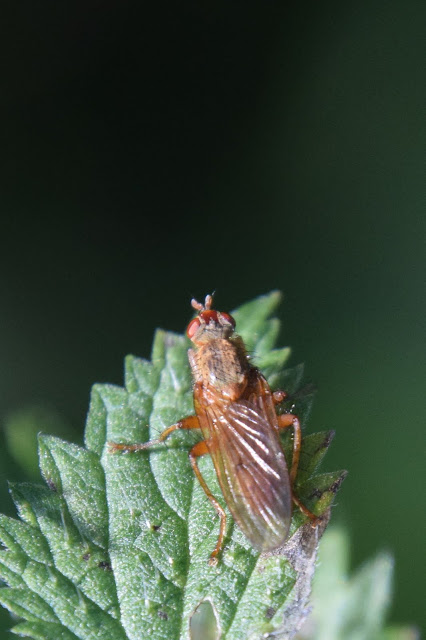Twentieth of April Twenty Twenty
(20/4/20)
The skies have been blue for yonks now.
The great crested grebe is a delightfully elegant waterbird with ornate head plumes which led to its being hunted for its feathers, almost leading to its extermination from the UK. They dive to feed and also to escape, preferring this to flying. On land they are clumsy because their feet are placed so far back on their bodies. They have an elaborate courtship display in which they rise out of the water and shake their heads. Very young grebes often ride on their parents' backs.
(From RSPB's website)
Side view of a dandelion flower
The common name dandelion (from French dent-de-lion, meaning "lion's tooth") is given to members of the genus. Like other members of the family Asteraceae, they have very small flowers collected together into a composite flower head. Each single flower in a head is called a floret. In part due to their abundance along with being a generalist species, dandelions are one of the most vital early spring nectar sources for a wide host of pollinators.
(Wiki)
Seventeenth of October Twenty Nineteen
The moon at twenty to six o' the morning
Pondorama
Sunrise over the pond
Taking off
Mute swan
Britain's heaviest flying bird
Weight: 22-31.5 pounds/10-14.3 kilograms
Wingspan: Males 6.8-7.8 feet/207-237 centimeters
Found: throughout the Northern Hemisphere (North America, Europe, Asia)
The sound as they fly low overhead is unmistakable:
"Whump! Whump! ... "
Morning pond
Fly, what fly I know not
Tiny flowers; only a few millimetres across.
Wasp feeding, and transferring pollen, on ivy flowers
Bee
(said he, not knowing for sure whether it were bee or fly)
Alder: female cones and male catkins
Flowers are on catkins which appear between February and April. Alder is monoecious, which means that both male and female flowers are found on the same tree. Male catkins are pendulous, measuring 2–6cm, and turn yellow. Female catkins are green and oval-shaped and are grouped in numbers of three to eight on each stalk.
(Woodland trust website)
Ragwort is unloved by many country folk as it is toxic to livestock.
Horses, however, will avoid the growing plant and leave it standing while the grass around it is all eaten. The main trouble arises when a meadow is mown, if there is ragwort in the resulting fodder it can detrimentally affect livestock.
Ragwort is a great food plant for many insects, especially bees.


















No comments:
Post a Comment
Speak: